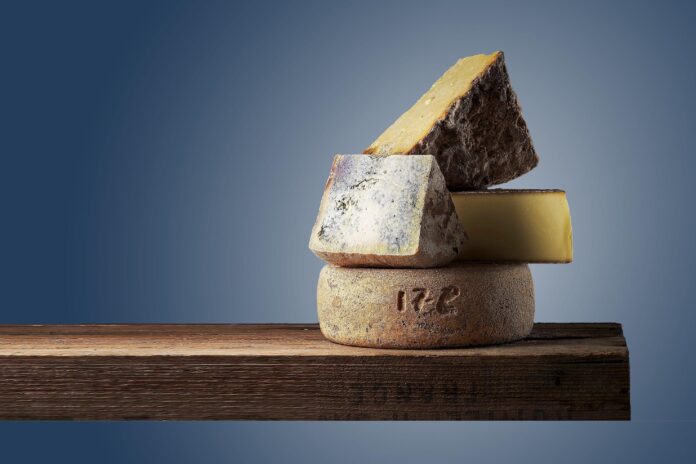Cream and cheese, two delectable dairy products, have been beloved staples in culinary traditions worldwide for centuries. From cream’s rich and silky texture to the vast array of flavors and textures found in artisanal cheeses, these dairy treasures have captivated taste buds and delighted food enthusiasts throughout history.
This article will embark on a delightful journey into artisanal cheeses, exploring these culinary wonders’ craftsmanship, flavors, and cultural significance.
The craftsmanship of artisanal cheeses
Artisanal cheeses are handcrafted gems created by skilled cheesemakers who take pride in their craft. Unlike mass-produced cheeses, often made with additives and standardized processes, artisanal cheeses are crafted in small batches using traditional methods and high-quality ingredients. Each step, from sourcing the milk to aging the cheese, is carefully executed to create unique flavors and textures that can’t be replicated on an industrial scale.
The craftsmanship of artisanal cheeses extends beyond the technical process.
Cheesemakers often have a deep knowledge of the local terroir, which influences the taste and character of the cheese. They may use milk from specific breeds of cows, sheep, or goats or explore unique aging techniques to enhance the complexity of flavors. The result is a cheese that tells a story, reflecting the region, the cheesemaker’s expertise, and the care that goes into its creation.
Exploring flavor profiles
One of the most fascinating aspects of artisanal cheeses is their incredible diversity in flavors and aromas. From delicate and mild to pungent and bold, there is a cheese to suit every palate. Soft-ripened cheeses like Brie or Camembert offer a creamy, buttery experience with a subtle tang. Hard cheeses like Parmesan or Cheddar provide robust and nutty flavors that intensify with age. Blue cheeses, with their distinctive veins of mold, deliver a complex blend of creamy, salty, and earthy notes.
Artisanal cheeses also offer opportunities to explore the nuances of terroir. Just as wine expresses the characteristics of the soil and climate in which the grapes are grown, cheese can showcase the unique qualities of the land. Cheeses from different regions can possess distinct flavors imparted by the local vegetation, mineral content in the soil, and even the specific breed of animal producing the milk. This exploration of flavors adds a sense of adventure to artisanal cheeses.
Pairing possibilities
One of the joys of artisanal cheeses is discovering their perfect companions. Pairing cheese with complementary flavors and textures can elevate the tasting experience. With its luscious and velvety texture, cream can be an ideal accompaniment to a wide range of artisanal cheeses. Its richness can balance the saltiness or sharpness of certain cheeses, while its mildness can enhance the delicate flavors of others.
When pairing cream with artisanal cheeses, consider the characteristics of the cheese. A tangy and crumbly goat cheese can be beautifully contrasted with a dollop of cream. At the same time, a robust and aged Gouda can benefit from cream’s silky texture and subtle sweetness—experiment with different combinations, considering texture, flavor intensity, and mouthfeel.
Cultural significance of artisanal cheeses
Artisanal cheeses hold immense cultural significance in various regions around the world. They are often deeply rooted in culinary traditions and reflect the cultural heritage of a particular place. In France, for example, cheeses like Camembert, Roquefort, and Brie are not just food items but symbols of national pride. These cheeses have protected designation of origin (PDO) status, meaning they must be produced within specific regions using traditional methods to bear their renowned names.
Similarly, in Italy, Parmigiano-Reggiano and Mozzarella di Bufala are iconic cheeses that have become synonymous with Italian cuisine. They are deeply ingrained in Italian culture, with recipes passed down through generations and strict regulations governing their production. These artisanal cheeses offer exquisite flavors and serve as cultural ambassadors, representing the traditions and heritage of their respective regions.
The art of cheese pairing and serving
Pairing and serving artisanal cheeses is an art in itself. To fully appreciate the flavors and textures, it’s essential to understand how to create a well-balanced cheese board and provide the optimal conditions for enjoying each cheese.
When creating a cheese board, consider offering a variety of cheese types, such as soft, semi-soft, hard, and blue. Aim for diverse flavors, from mild and creamy to bold and tangy. Include a mix of cow’s milk, sheep’s milk, and goat’s milk cheeses to provide a range of tastes and textures.
To enhance the cheese experience, include accompaniments that complement the flavors. Fresh and dried fruits, honey or jams, nuts, and crusty bread or crackers are all excellent choices. These additions provide contrasting textures, sweetness, and acidity that can elevate the cheese taste.
If you want to indulge yourself and add a small dollop of whipped cream on top of your charcuterie cheese plate why not use a whipped cream charger from https://www.nangwizard.net/wholesale/.
On that note
Cream and cheese, the treasures of the dairy world, offer a delightful exploration of flavors, craftsmanship, and cultural significance. With their meticulous craftsmanship, artisanal cheeses provide a glimpse into the dedication and passion of cheesemakers who strive to create unique and exceptional products. From the delicate soft-ripened cheeses to the bold and complex blues, the world of artisanal cheeses is a tapestry of flavors waiting to be discovered.
By exploring the wide range of flavor profiles, we can embark on a sensory adventure that stimulates our taste buds and ignites our curiosity. The art of pairing cream with artisanal cheeses opens up new dimensions of taste, allowing us to create harmonious combinations that enhance and elevate the flavors.











